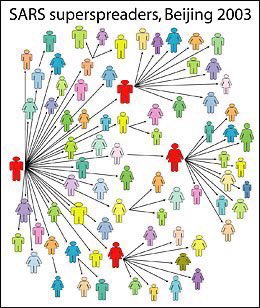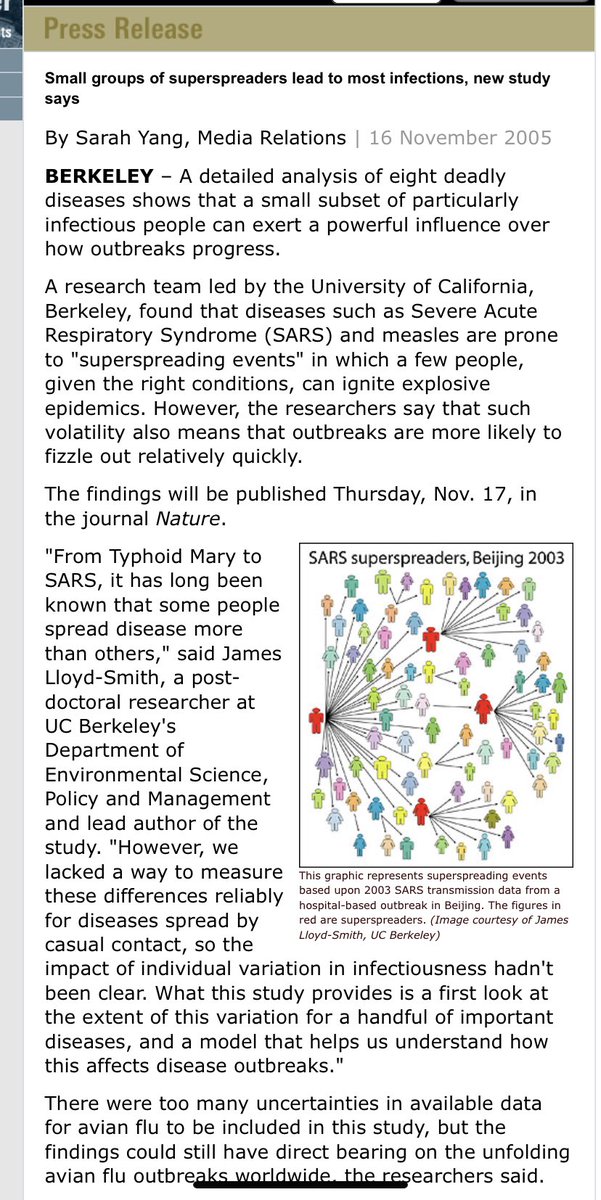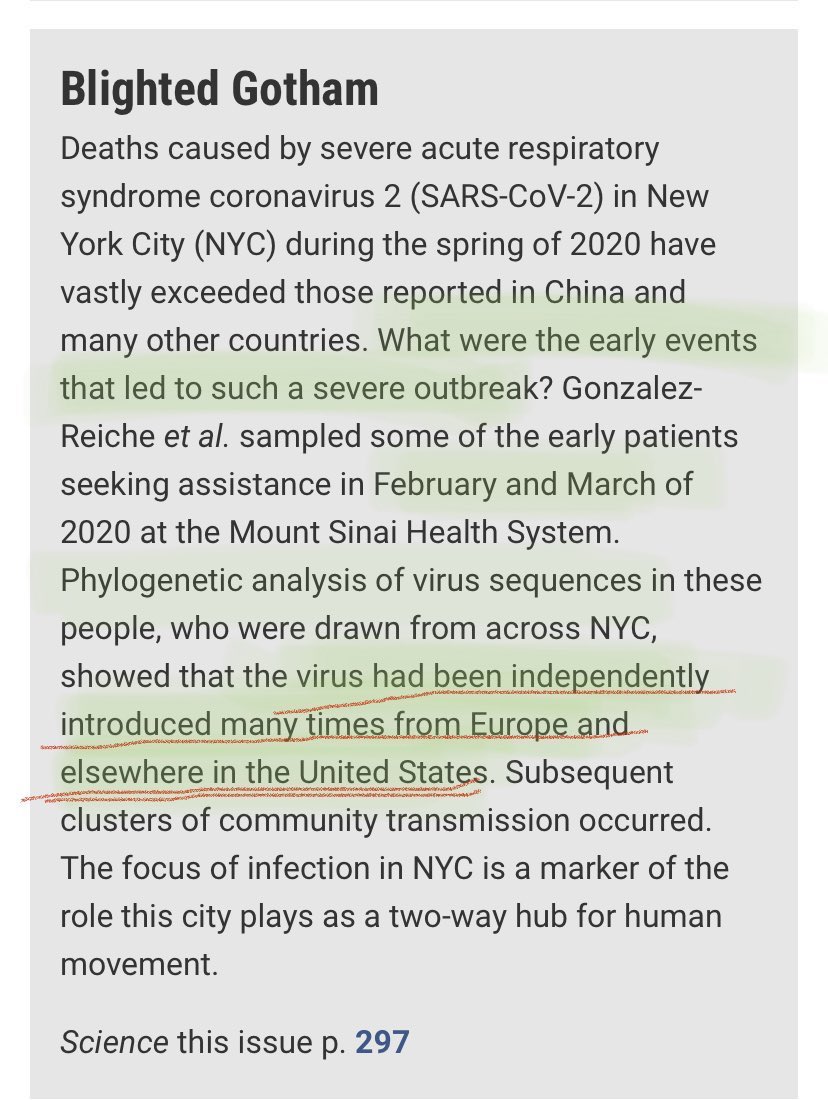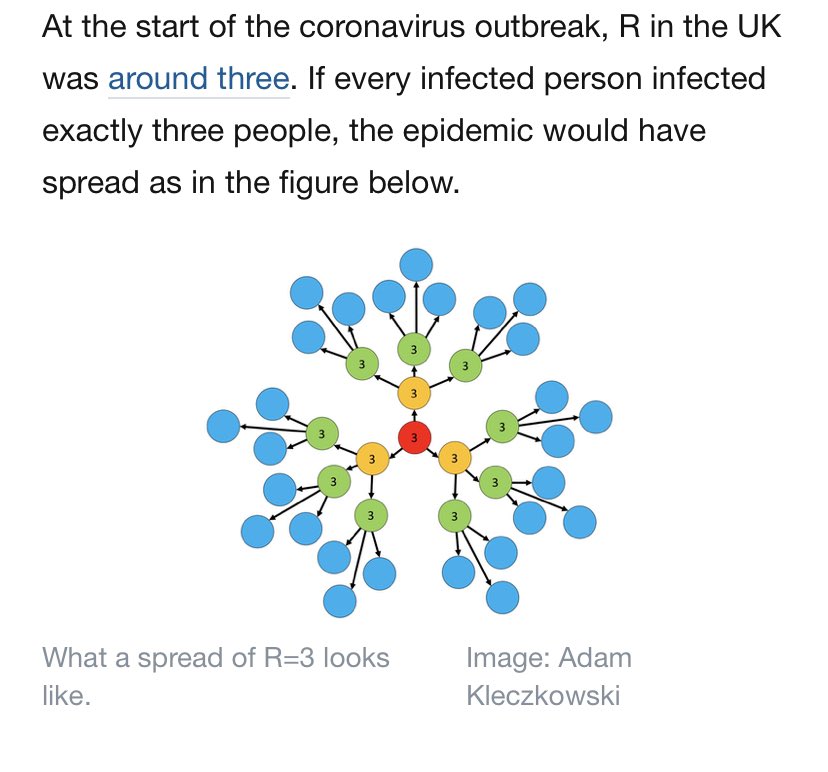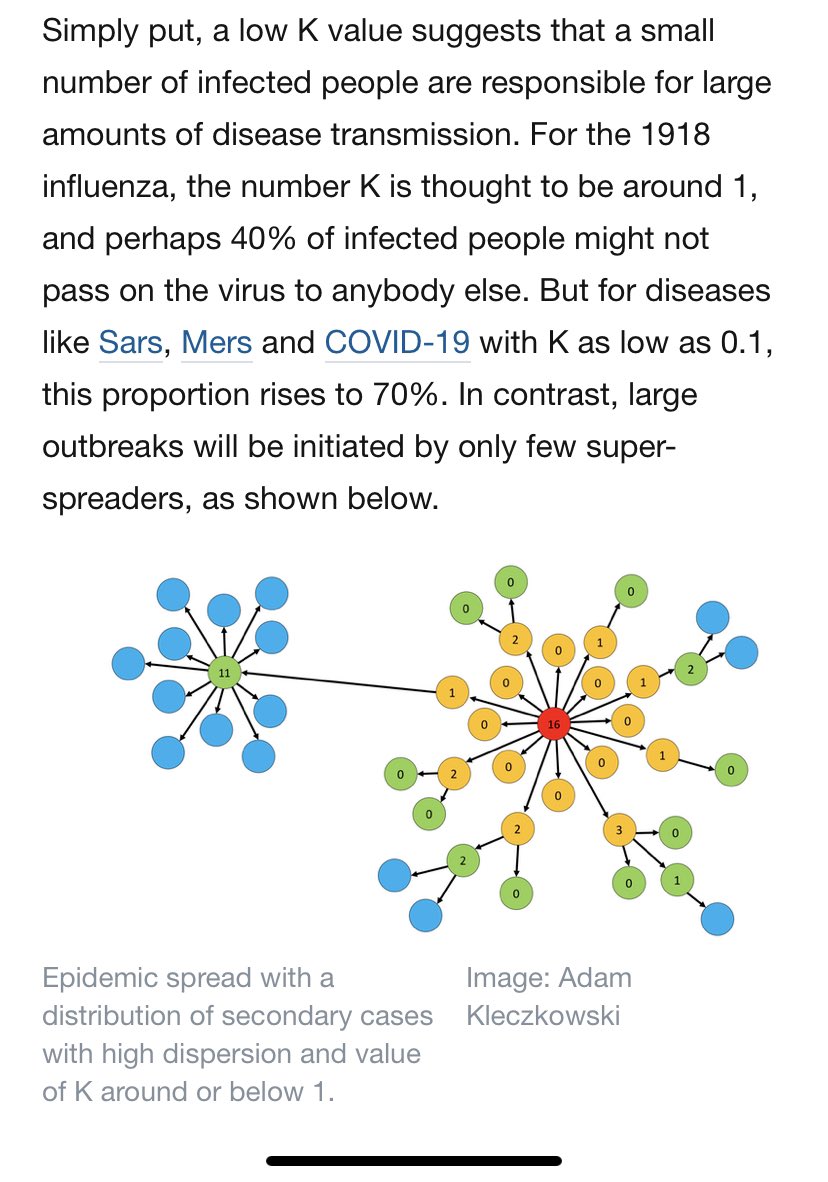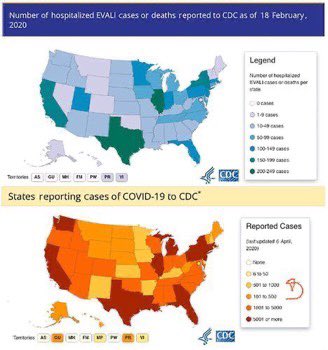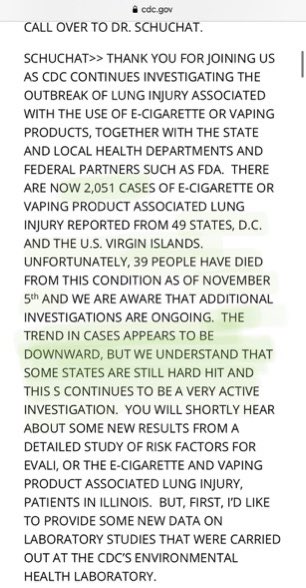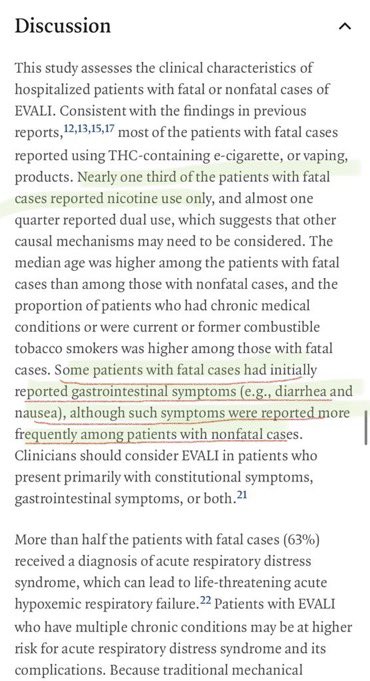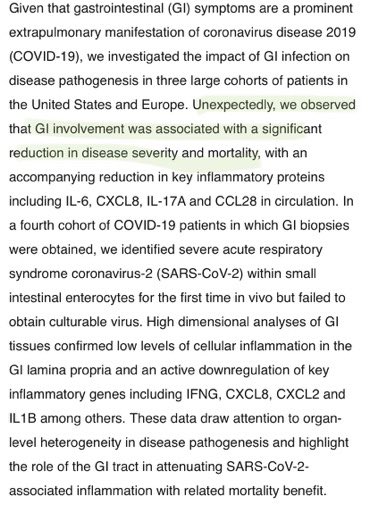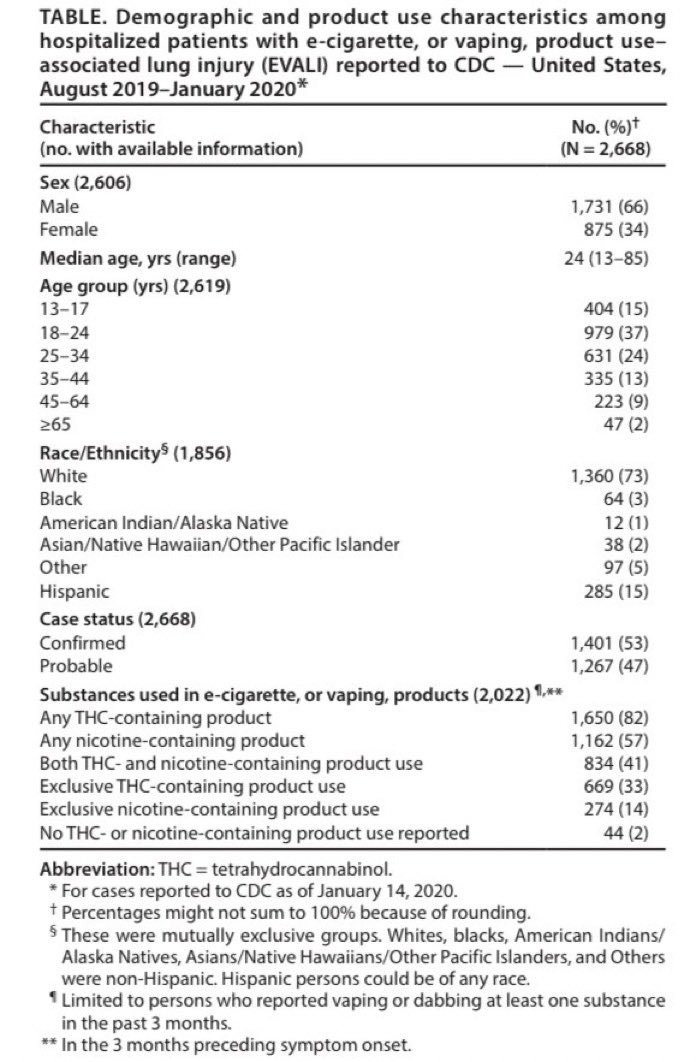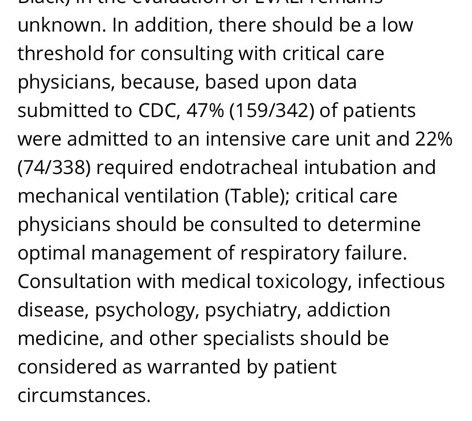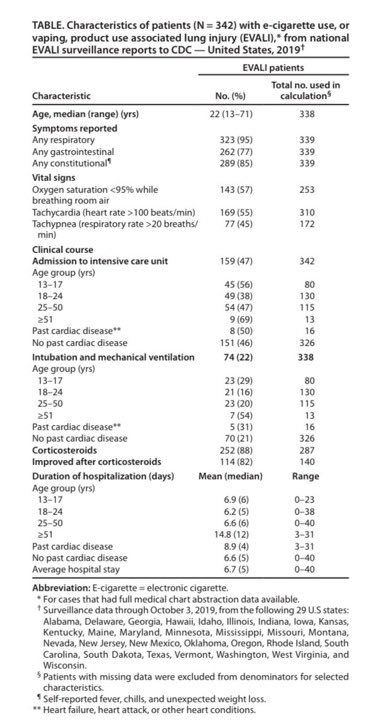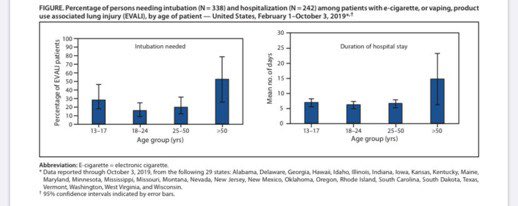1/
The k value, the dispersion of the R0 among cases, is low in SARS-cov-2, as it was in SARS 1
10-20% of cases cause 80-90% of new infections.
*7/10 cases don’t infect anyone else.*
Add to this the high asymptomatic & paucisymptomatic rate, & long incubation,
The k value, the dispersion of the R0 among cases, is low in SARS-cov-2, as it was in SARS 1
10-20% of cases cause 80-90% of new infections.
*7/10 cases don’t infect anyone else.*
Add to this the high asymptomatic & paucisymptomatic rate, & long incubation,
2/& it might not be immediately clear that the illnesses were infectious. There would be a burst of simultaneous infections from a superspreader event, but the virus would only be carried on by 1 or 2 out of 10 new infections. In many cases, the infection chains would fizzle out.
3/For a rapid growth of cases in a population the virus needs some “luck” getting a series of SSP events. Until it has many simultaneous chains of infection, it would be a slower spread, w/ occasional bursts
The NYC outbreak was caused by many infection chains hitting at once
The NYC outbreak was caused by many infection chains hitting at once
4/ Because of the dispersion pattern, places with similar density & susceptibility might have very different rates of disease depending on SSP event(s). This looks different than spread of flu, which is a higher k value & shows fairly even growth.
5/Also, r.e. rate of spread- A new clade of the virus emerged in late January that seems to have outcompeted previous strains, possibly w/ 3-6x higher R0. The D614G strain began as a small % of all cases, then rapidly dominated other clades in prevalence https://www.nature.com/articles/s41598-020-70827-z/figures/1">https://www.nature.com/articles/...
6/ The D614G clade was first detected in Europe in samples from late Jan. (& we don’t really know which strains were in the US at that time, due to the test criteria of travel to China). So the initial spread of SARS-2, prior to D614G, *may* have been slower.
7/ I am not trying to minimize the risk of the virus & its terrible potential for harm to individuals, or its ability to overwhelm a healthcare system, but just to point out that it would have looked scattershot at first. It would look like clusters of illness possibly leading to
8/ nothing in some cases, or simultaneous clusters of illness followed by low levels of undetected spread. It needs to expand its network until there are multiple infection chains occurring that impact places at the same time, & only then can it sustain exponential growth.
9/ Because of this pattern, it is likely that early severe illness & deaths in those most at-risk from CV-19 were mistaken for flu, community acquired pneumonia, or complications of preexisting illnesses. The first signs that something was amiss might be in young, healthy people.
10/ Especially clusters of unexplained respiratory illness in young, healthy people, outside of flu season. Severe CV19 is much less likely in this demographic, so the first signal might be in a group w/a risk-factor -like vaping- that worsens infection/ increases viral inoculum.
11/ This may be coincidental, but the pattern of the EVALI cases did tend to show clustered outbreaks throughout the country, which would fade & then more clusters would appear elsewhere. As of a telebriefing in 11/2019 some places were still “hard hit”
https://www.cdc.gov/media/releases/2019/t1108-telebriefing-vaping.html">https://www.cdc.gov/media/rel...
https://www.cdc.gov/media/releases/2019/t1108-telebriefing-vaping.html">https://www.cdc.gov/media/rel...
12/ Other than a sars-cov-2 test, there are few, if any, ways to distinguish EVALI from Covid-19. Each can present differently between individuals & change over the course of an illness, but they share the same pattern of lung injury often w/ ground glass opacities & interstitial
13/ pneumonia w/ a percentage of severe cases developing ARDS & a large percentage of hospitalized cases requiring ICU, intubation, & ECMO. Both illnesses tend to start w/ respiratory, GI, & constitutional symptoms worsening over days to weeks, sometimes w/ GI symptoms appearing
14/ first. In both illnesses, GI symptoms were associated w/ reduced severity & mortality,
https://twitter.com/sixandlaura/status/1315123001545891841?s=21">https://twitter.com/sixandlau...
https://twitter.com/sixandlaura/status/1315123001545891841?s=21">https://twitter.com/sixandlau...
15/ Both illnesses affect men more often & more severely,
( EVALI MMWR 1/17/20) https://www.cdc.gov/mmwr/volumes/69/wr/pdfs/mm6903e2-H.pdf
(4/23/20">https://www.cdc.gov/mmwr/volu... Fatal vs Nonfatal cases )
https://www.nejm.org/doi/full/10.1056/NEJMoa1915314">https://www.nejm.org/doi/full/...
( EVALI MMWR 1/17/20) https://www.cdc.gov/mmwr/volumes/69/wr/pdfs/mm6903e2-H.pdf
(4/23/20">https://www.cdc.gov/mmwr/volu... Fatal vs Nonfatal cases )
https://www.nejm.org/doi/full/10.1056/NEJMoa1915314">https://www.nejm.org/doi/full/...
16/ Both illnesses are disproportionately deadly in older age groups. The median age for those who survived EVALI was 23, the median age of those who died was 45. The >65yo group was just 2% of all EVALI cases but had 25% of deaths.
https://www.cdc.gov/mmwr/volumes/68/wr/pdfs/mm6843e1-H.pdf">https://www.cdc.gov/mmwr/volu...
https://www.cdc.gov/mmwr/volumes/68/wr/pdfs/mm6843e1-H.pdf">https://www.cdc.gov/mmwr/volu...
17/ Like Covid-19, some cases of EVALI showed improvement at a midpoint in illness, even leading to hospital discharge, only to be followed by return of symptoms of increased severity, sometimes leading to death
https://www.cdc.gov/mmwr/volumes/68/wr/pdfs/mm685152e1-H.pdf">https://www.cdc.gov/mmwr/volu...
https://www.cdc.gov/mmwr/volumes/68/wr/pdfs/mm685152e1-H.pdf">https://www.cdc.gov/mmwr/volu...
18/ Both illnesses can be treated successfully with systemic steroids, which helps in a portion of cases but not all.
https://www.cdc.gov/mmwr/volumes/68/wr/pdfs/mm6841e3-H.pdf">https://www.cdc.gov/mmwr/volu...
https://www.cdc.gov/mmwr/volumes/68/wr/pdfs/mm6841e3-H.pdf">https://www.cdc.gov/mmwr/volu...
19/ The CDC only tracked EVALI cases severe enough to require hospital admittance, so those presenting only to ER or general practitioners are not included in the CDC tally. There is a “milder” form of EVALI referenced in the medical literature which was not tracked.
20/ Of the hospital admitted cases, about 50% required ICU support & about 25% required intubation & mechanical ventilation. About 2% of cases resulted in death.
https://www.cdc.gov/mmwr/volumes/68/wr/pdfs/mm6841e3-H.pdf">https://www.cdc.gov/mmwr/volu...
https://www.cdc.gov/mmwr/volumes/68/wr/pdfs/mm6841e3-H.pdf">https://www.cdc.gov/mmwr/volu...
21/ Of cases of EVALI resulting in death, 29% only had reported nicotine vaping. Vitamin E acetate is proposed as a possible cause of EVALI, but it is only in some THC & CBD vapes, never in water based nicotine vapes. https://www.jwatch.org/na51352/2020/05/12/characteristics-patients-with-fatal-vaping-associated-lung">https://www.jwatch.org/na51352/2...
22/ This is already a very long thread, but there are additional similarities between EVALI & Cv19 (ex. duration of symptoms & hospital stays) & more evidence suggesting multiple “clusters” of EVALI in geographical locations and in immediate social groups
https://www.cdc.gov/mmwr/volumes/69/wr/pdfs/mm6909a4-H.pdf">https://www.cdc.gov/mmwr/volu...
https://www.cdc.gov/mmwr/volumes/69/wr/pdfs/mm6909a4-H.pdf">https://www.cdc.gov/mmwr/volu...
23/ I think it is likely cases such as this one were misdiagnosed CV19.
https://abcnews.go.com/US/hospitalized-vaping-device-found-wisconsin-school/story?id=69067857
One">https://abcnews.go.com/US/hospit... or two instances of misdiagnosis or overlap in EVALI & CV19 probably would not indicate a need for more consideration, especially in the midst of the crisis.
https://abcnews.go.com/US/hospitalized-vaping-device-found-wisconsin-school/story?id=69067857
One">https://abcnews.go.com/US/hospit... or two instances of misdiagnosis or overlap in EVALI & CV19 probably would not indicate a need for more consideration, especially in the midst of the crisis.
24/ But if you look at the sudden emergence & clustered outbreaks starting around June/July, combined with the lack of a clear explanation for EVALI, it seems like it would be prudent to do testing, if just to rule out the remote possibility of SARS-cov-2 in early EVALI cases.
25/ It may be that the CDC or other entities have already done this testing & I just haven’t found it. But if the CDC never tested for a novel virus, & if EVALI sample or wastewater testing hasn’t been done to rule out early sars-cov-2, we should do this before samples degrade ..
26/ and we no longer have the ability to know for sure. The data is suggestive & inconclusive enough that this will be brought up in the future.
If you have read through this long thread I am truly grateful. I may be misguided but I am sincere. I welcome critique or suggestions.
If you have read through this long thread I am truly grateful. I may be misguided but I am sincere. I welcome critique or suggestions.
(Start of the thread) https://twitter.com/SixandLaura/status/1317436143584018432">https://twitter.com/SixandLau...

 Read on Twitter
Read on Twitter